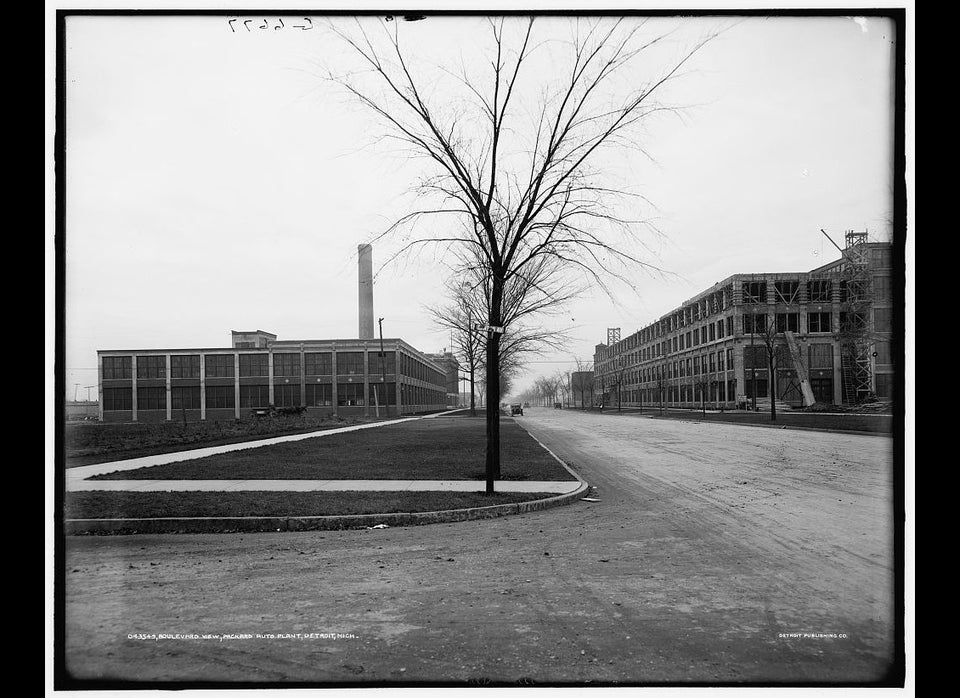
A Canadian businessman's plan to demolish a historic building in downtown Detroit, making way for another parking structure, has left a bad taste in the mouths of local preservationists.
The Detroit Free Press reports the owner of the State Savings Bank at W. Fort and Shelby St., Andreas Apostolopoulos, is considering demolishing the entire building or transforming the interior to create parking for the nearby Penobscot Building.
Apostolopoulos' Toronto-based company Triple Properties purchased the State Savings Bank, which was built in 1900 and is on the National Registry of Historic Places, for $700,000 this month. The company acquired the foreclosed Penobscot in May for $5 million.
Triple Properties' Canadian origins hasn't stopped the company's principals from taking an interest in Metro Detroit -- or, some might say, speculating on the region's devalued commercial assets. Apostolopoulos, who happens to belong to one of Canada's richest families, purchased the Pontiac Silverdome in a controversial 2009 auction for $583,000, a tiny fraction of what the stadium cost to build.
He's put several million into improvements since, but some took affront to his recent request for five years of tax breaks from the cash-strapped city north of Detroit. While Apostolopoulous has talked about turning the stadium into the home for a Major League Soccer team, he's currently only working on critical repairs.
Fans of the city's historic architecture have raised cries of alarm online about the building's possible destruction, particularly protesting Apostolopoulos' statement to the Free Press that “Detroit needs parking" for people to come downtown. There are other lots in the immediate vicinity, and the bank building happens to be located directly across from a Central Parking garage.
That's not to say that Detroit doesn't have its parking woes, but bulldozing buildings for surface lots decreases density and walkability in a downtown district that's already rife with vacancy. Some critics say that razing structures for parking lots, many of which sit empty without a sports event or concert scheduled, further cripples downtown Detroit's progress in attracting residential and commercial tenants.
But issues with city parking like broken parking meters and and car break-ins may be a larger impediment to satisfying parking customers, argues Josh McManus, who works with neighborhood nonprofit D:Hive to attract, connect and retain more businesses and residents in the city.
"The real parking wars of Detroit are between the city and itself," he writes in a blog post for the Little Things Lab. "In my opinion, short-term revenue and preservation of jobs are being chosen over expanding the base of people willing to live, work and play in Downtown Detroit."
Just this summer, the city cancelled all credit card transactions for parking meters without notifying residents.
Urban planner Rob Linn, an analyst for Data Driven Detroit, notes that numerous studies continue to document the negative lasting impact of large surface parking lots on urban vitality, quality of life and economic growth. Nevertheless, he points out, "While off-street parking accounts for 6.57% of urban land uses nationally, the area surrounding Comerica Park devotes 21.66% of its parcel area to public off-street surface parking lots."
The building's historic designation would make the demo process more complicated, but not impossible, and the protests of preservationists hasn't stopped other beloved structures -- Tiger Stadium, Old Cass Tech and the Lafayette Building, to name a few -- from getting torn down. When Mike Ilitch wanted to tear down several historic buildings to create parking, he received city money. It wouldn't even be the first historic building to be gutted and have its interior turned into parking, like the Michigan Theater.
The Penobscot was half-occupied as of June, according to the Detroit News, and Triple Properties planned to offer low rental rates with a goal of 90 percent occupancy by next year.
State Savings Bank was built in the Beaux Arts style by the acclaimed McKim, Mead and White architectural firm of New York in 1900 and received an addition 15 years later from Detroit architect firm Donaldson and Meier.
Photo from Library of Congress, Prints & Photographs Division, Detroit Publishing Company Collection, LC-D4-42038.
